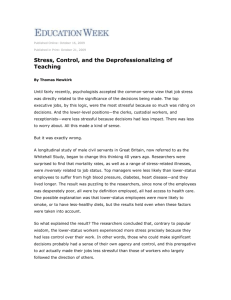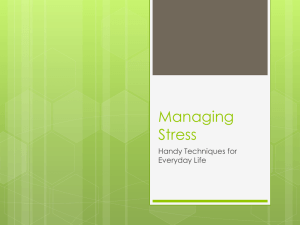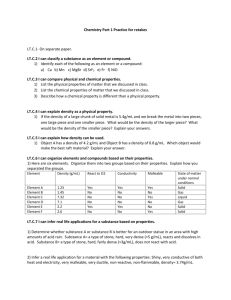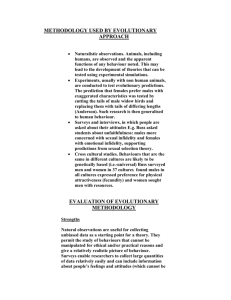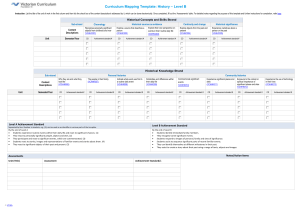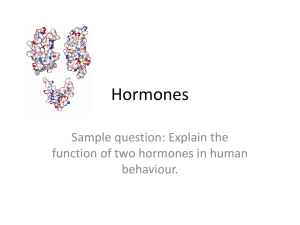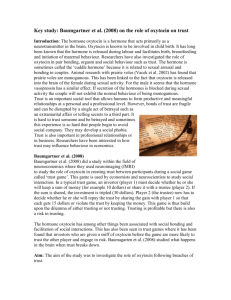How Men and Women Cope with Stress
advertisement
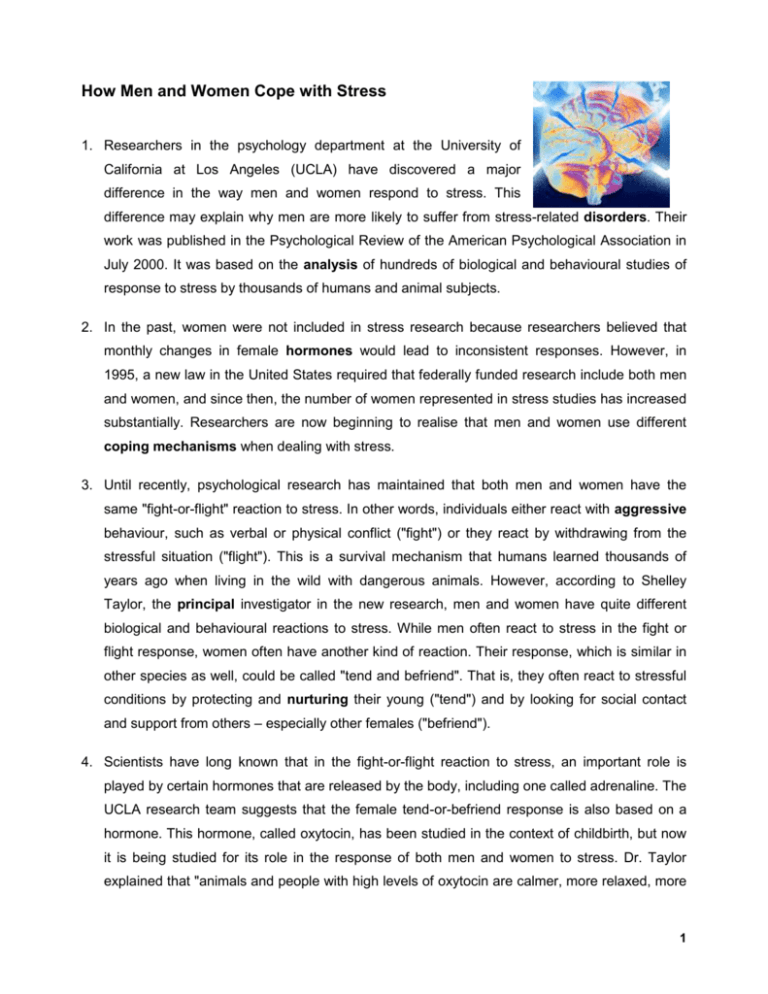
How Men and Women Cope with Stress 1. Researchers in the psychology department at the University of California at Los Angeles (UCLA) have discovered a major difference in the way men and women respond to stress. This difference may explain why men are more likely to suffer from stress-related disorders. Their work was published in the Psychological Review of the American Psychological Association in July 2000. It was based on the analysis of hundreds of biological and behavioural studies of response to stress by thousands of humans and animal subjects. 2. In the past, women were not included in stress research because researchers believed that monthly changes in female hormones would lead to inconsistent responses. However, in 1995, a new law in the United States required that federally funded research include both men and women, and since then, the number of women represented in stress studies has increased substantially. Researchers are now beginning to realise that men and women use different coping mechanisms when dealing with stress. 3. Until recently, psychological research has maintained that both men and women have the same "fight-or-flight" reaction to stress. In other words, individuals either react with aggressive behaviour, such as verbal or physical conflict ("fight") or they react by withdrawing from the stressful situation ("flight"). This is a survival mechanism that humans learned thousands of years ago when living in the wild with dangerous animals. However, according to Shelley Taylor, the principal investigator in the new research, men and women have quite different biological and behavioural reactions to stress. While men often react to stress in the fight or flight response, women often have another kind of reaction. Their response, which is similar in other species as well, could be called "tend and befriend". That is, they often react to stressful conditions by protecting and nurturing their young ("tend") and by looking for social contact and support from others – especially other females ("befriend"). 4. Scientists have long known that in the fight-or-flight reaction to stress, an important role is played by certain hormones that are released by the body, including one called adrenaline. The UCLA research team suggests that the female tend-or-befriend response is also based on a hormone. This hormone, called oxytocin, has been studied in the context of childbirth, but now it is being studied for its role in the response of both men and women to stress. Dr. Taylor explained that "animals and people with high levels of oxytocin are calmer, more relaxed, more 1 social, and less anxious." While men also secrete oxytocin, its effects are reduced by male hormones. This means that in stressful situations, oxytocin has more of an effect on women. 5. In terms of everyday behaviour, the UCLA study found that women are far more likely than men to seek social contact when they are feeling stressed. They may phone relatives or friends, or ask directions if they are lost. This difference in seeking social support is one of the most basic differences between men's and women's behaviour, according to Dr. Taylor. 6. One of the studies analysed by Dr. Taylor's team showed how fathers and mothers included in the study responded differently when they came home to their family after a stressful day at work. The typical father wanted to be left alone to enjoy some peace and quiet, or if work was especially stressful, he might react harshly to his children. On the other hand, for a typical mother in this study, coping with a bad day at work meant focussing her attention on her children and their needs. 7. Other researchers looked at how well women functioned after the death of their husband. The death of a spouse is thought to be the worst cause of stress that people can face. They found that women who had close friends and confidantes were more likely to survive the experience without a negative effect on their health or feeling of vitality. 8. The differences in responding to stress may explain the fact that women have a lower incidence of stress-related disorders such as hypertension, aggressive behaviour, or alcohol and drug abuse. The tend-and-befriend regulatory system may protect women against stress, and this may explain why women on average live about seven and half years longer than men. 2
